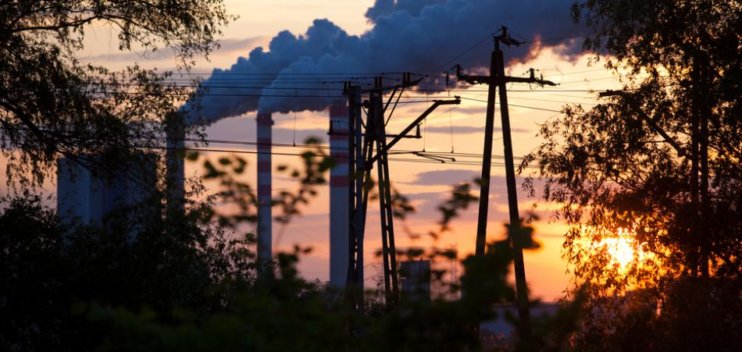Lower carbon emissions sooner.
The Paris Climate Agreement seeks to limit global warming to no more than 1.5 degrees above pre-industrial levels. However, the Agreement is vague concerning the pace of change, therefore countries (and businesses) have different opinions concerning adoption and implementation of carbon emissions reduction actions.
Members of the Intergovernmental Panel on Climate Change (IPCC) considered that to hold an increase of <1.5 degrees, the world must reach zero carbon emissions before 2050. To limit warming to two degrees, zero emissions would be required before 2070. In February 2015 Climate Analytics, a research organisation led by several IPCC authors, stated that to limit warming to two degrees, global greenhouse gas emissions in 2050 would need to be about half the 2010 level, falling to net zero between 2080 and 2100. All these forecasts seemed to be a long way off and of no immediate concern to businesses and individuals.
However, only two years later, in February 2017, models developed by researchers at the Potsdam Institute for Climate Impact Research changed the dates. Using an assumption of two degrees warming (1.5 degrees appears to have slipped off the radar) requires all coal fired power stations to be closed by 2025 and the internal combustion engine eliminated by 2030. Separately, Stockholm University models indicate the use of coal for power generation must cease by 2030-35, the internal combustion engine phased out by 2035 and the use of oil in energy generation stopped by 2040-45.
By the nature of models and algorithms, the assumptions used can skew outcomes, but it is clear that the horizon for serious action to limit carbon emissions is getting closer. Logisticians will be called upon for decisions and action in the not too distant future – it could be much less than 13 years! Most likely, you will not be in the same role, but by then, the buildings and vehicles you have proposed or approved for purchase, leasing or renting could still be in service.
Action in Logistics is occurring now
A recent press release by the Australian office of a global commercial real estate company stated that clients leasing warehouses and distribution centres require solar efficient facilities: insulated and heat diffusing roofs; insulated walls; offices facing north and operations opening doors between south and east (for the northern hemisphere, offices will be facing south and operations openings north and east). Solar panels and battery storage are currently on the ‘nice to have’ list, but will be required by demanding clients within the next three years.
China will introduce an electric car quota for major cities, based on a percentage of a brand company’s vehicle sales. While this is implemented under the banner of pollution reduction, the outcome follows the script to reduce carbon emissions.
As an easily measured target, Unilever, IKEA and Shell are examples of companies that have accepted the concept of Net Zero Carbon Emissions. That is, by 2050 (or earlier) produce internally as much renewable energy as the energy consumed by the business. Net Zero is what your organisation actually achieves and is not manipulated by the buying of carbon credits from other businesses, using carbon offset arrangement (similar to what you can buy from an airline to offset the carbon used on your flight) or sequestration (the trapping of a chemical (i.e. carbon) in the atmosphere and its isolation in a natural or artificial storage facility).
For buildings, the term Net Zero Carbon Emissions, or ‘carbon zero’, ‘carbon neutral’, ‘zero energy’ or ‘zero emission’ applies to buildings that use renewable energy sources on site to generate energy for their operation, so that over a year the net amount of energy generated on site equals the net amount of energy required by the building. In Australia, this is defined by the Australian Sustainable Built Environment Council (ASBEC) – there will be similar organisations in other countries. Carbon Positive is the term used for going beyond Net Zero Carbon Emissions; making ‘positive’ or ‘net exports’ by producing more energy on site than the building requires and feeding it back to the grid. Very nice, but get to Net Zero first!
While you can imagine a power generation system in a warehouse or DC that has Net Zero emissions, this is not the complete solution to the energy and emissions challenges for a Logistician, as electricity currently represents about 20% of the global energy mix. In transport, a significant amount of light road transport vehicles will migrate to electric power, but heavy road transport, shipping and aviation will be the greater challenge.
Supply Chain scenarios and risks
While the technologies of transport modes are beyond the role of Logisticians, the future needs to be considered in the frame of likely scenarios over the next 10-15 years. For example, consolidation of container shipping lines will result in a high proportion (Gartner considers more than 80 percent) of sailings will be controlled by a few large groups. The outcome, to ensure full ships, could be higher freight rates and limited sailings to selected ports. Another scenario is the implementation of cost effective technologies that allow local production of some goods, requiring less distribution transport.
As the future will contain many variables, consider implementing risk management as a structured process within your Supply Chains. This should be combined with a flexible approach for responding to supply chain surprises, or unidentified risks. Elements of a flexible organisations are:
- Build relationships with selected upstream and downstream parties in your supply network – build trust and therefore loyalty with suppliers and customers
- Share risks and rewards to increase leverage in contract negotiations with suppliers and customers
- Cooperate with competitors where it is a non- competing benefit i.e. shared buying and holding repair parts
- Innovate within your core competencies – do not divert scarce resources
- Build forecasting and planning capabilities – know why an approach works, not just how
- Build employee loyalty – helping to identify solutions using collective knowledge and knowing the organisation
Government policies to reduce carbon emissions, changes to technologies and financial markets re-pricing of risks could significantly affect assets owned or controlled by businesses in the agriculture, energy, mining, manufacturing and transport sectors. When this occurs, Logisticians will be at the forefront of actions to overcome the challenges, so be prepared!

